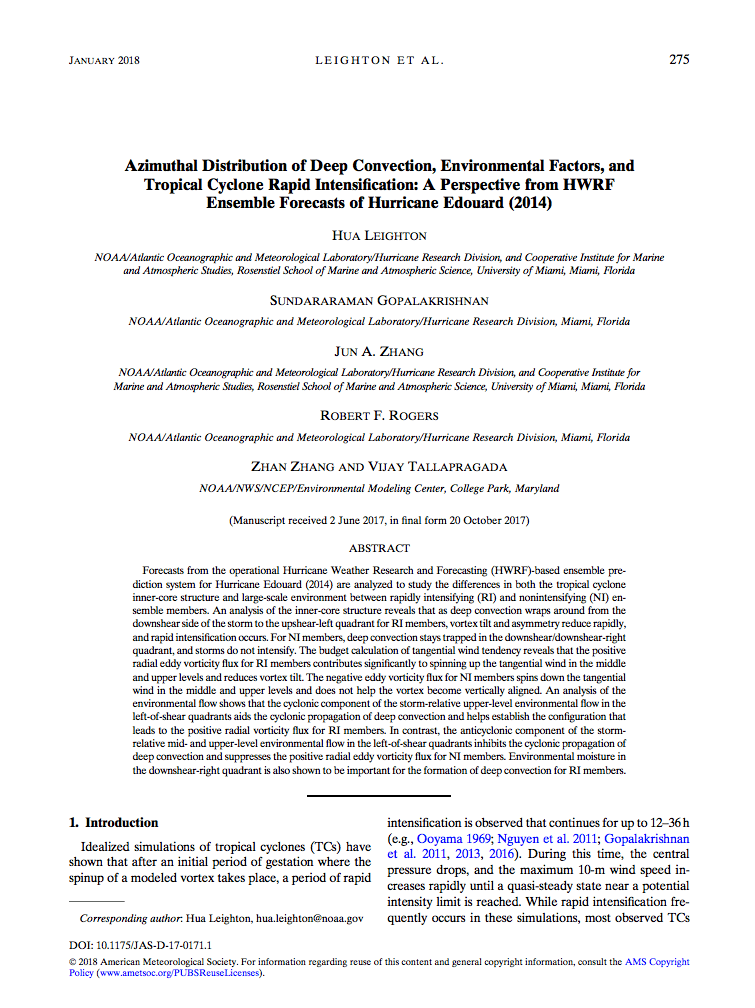Leighton, H., Gopalakrishnan, S., Zhang, J. A., Rogers, R. F., Zhang, Z., & Tallapragada, V. (2018). Azimuthal distribution of deep convection, environmental factors, and tropical cyclone rapid intensification: A perspective from HWRF ensemble forecasts of Hurricane Edouard (2014). Journal of the Atmospheric Sciences, 75(1), 275-295.
Abstract:
Forecasts from the operational Hurricane Weather Research and Forecasting (HWRF)-based ensemble prediction system for Hurricane Edouard (2014) are analyzed to study the differences in both the tropical cyclone inner-core structure and large-scale environment between rapidly intensifying (RI) and non intensifying (NI) ensemble members. An analysis of the inner-core structure reveals that as deep convection wraps around from the downshear side of the storm to the upshear-left quadrant for RI members, vortex tilt and asymmetry reduce rapidly, and rapid intensification occurs. For NI members, deep convection stays trapped in the downshear/downshear-right quadrant, and storms do not intensify.
The budget calculation of tangential wind tendency reveals that the positive radial eddy vorticity flux for RI members contributes significantly to spinning up the tangential wind in the middle and upper levels and reduces vortex tilt. The negative eddy vorticity flux for NI members spins down the tangential wind in the middle and upper levels and does not help the vortex become vertically aligned. An analysis of the environmental flow shows that the cyclonic component of the storm-relative upper-level environmental flow in the left-of-shear quadrants aids the cyclonic propagation of deep convection and helps establish the configuration that leads to the positive radial vorticity flux for RI members. In contrast, the anticyclonic component of the storm relative mid- and upper-level environmental flow in the left-of-shear quadrants inhibits the cyclonic propagation of deep convection and suppresses the positive radial eddy vorticity flux for NI members. Environmental moisture in the downshear-right quadrant is also shown to be important for the formation of deep convection for RI members.
